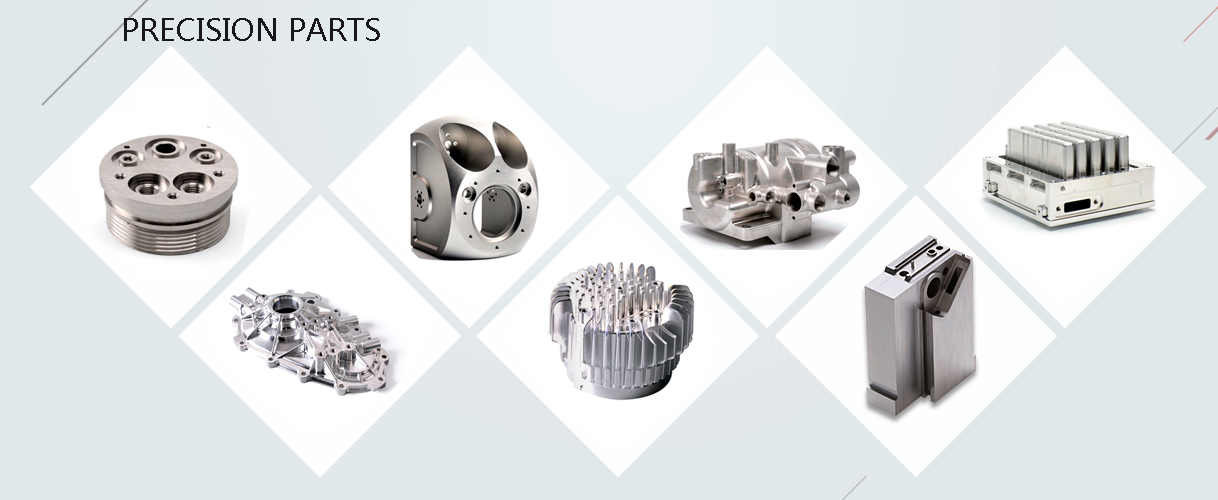CNC PROTOTYPE
CNC prototype Services for Precision parts
Precision parts processing can be divided into standard parts processing and non-standard parts processing according to the processing objects. Standard parts processing is relatively easy, and non-standard parts processing is relatively difficult.
The non-standard parts are proposed relative to the standard parts. The standard parts refer to the structure, size, drawing, marking and other aspects that have been fully standardized and are commonly used parts produced by professional factories, such as automotive standard parts and mold standard parts , All belong to the general standard parts.
The processing of non-standard parts is mainly due to the fact that the country has not set strict standard specifications, and there are no other accessories that are freely controlled by the enterprise except for the relevant parameter regulations. There are many varieties of non-standard parts, and there is currently no very standardized classification.

low volume production
Due to the wide range of batch production, it is usually divided into three types: “large batch production”, “medium batch production” and “small batch production”. Small batch production refers to the production of a single product that is basically a special product that is required in small batches.
Single-piece small batch production is a typical order-based production (MTO), and its characteristics are similar to single-piece production. It is commonly known as “single-piece small batch production”. Therefore, in a sense, the expression “single batch production” is more in line with the actual situation of the enterprise.
Flexible production mode, in order to meet customers’ diversified, individualized, multi-variety small batch needs.
The prototype is one or a few of the first made according to the product appearance drawings or structural drawings without opening the mold and is used to check the appearance or structure of the functional model.
CNC prototype
The main workload of CNC Shouban is done with CNC machine tools, and depending on the equipment used, it can be divided into laser rapid prototyping (SLA) Shouban and machining center (CNC) Shouban and RP Shouban (3D printing).
CNC Shouban: The processing quality is stable, the processing accuracy is high, and the repeating accuracy is high. It can process complex shapes that are difficult to be processed by conventional methods, and can even process some unobservable processing parts.
The advantages of CNC Shouban are that it can accurately reflect the information expressed in the drawings, and the surface quality of CNC Shouban is high, especially after its surface spraying and screen printing are completed, even more, glorious than the products produced after opening the mold. Therefore, CNC Shouban manufacturing has increasingly become the mainstream of Shouban manufacturing.
3D printing
3D printing is a type of rapid prototyping technology. It is a technology based on digital model files, which uses special wax materials, powdered metals or plastics and other adhesive materials to construct objects by layer-by-layer printing. It is often used in the field of mold manufacturing, industrial design, etc. to make models or for the direct manufacture of some products. This technology is used in jewelry, footwear, industrial design, architecture, engineering and construction, automotive, aerospace, dental and medical industries, It has applications in education, civil engineering, firearms, and other fields.

3D printing can easily achieve personalized design and customization of products, greatly reducing product development time. This advantage has given us non-mechanical research workers, and can also carry out relevant geometric, structural, material and other aspects of research, greatly deepening and expanding the related research problems in manufacturing
Sheet metal
Sheet metal is the metal deformation of some metal sheets through manual or die stamping to form the desired shape and size, and can be further welded or a small amount of mechanical processing to form more complex parts. Generally, the most important sheet metal process is The four steps are shearing, punching / cutting /, folding / rolling, welding, surface treatment, etc.

As the application of sheet metal becomes more and more extensive, the design of sheet metal parts has become an important part of the product development process. Sheet metal has the characteristics of light weight, high strength, electrical conductivity (can be used for electromagnetic shielding), low cost, and good mass production performance. It is widely used in electronic appliances, communications, automotive industry, medical equipment and other fields In computer cases, mobile phones, and MP3s, sheet metal is an essential component.
Advantages Of Making A Prototype
How can partnering with Star Rapid to quickly manufacture a prototype help you and your business? Here are just some of the ways:
- Show your customers and investors a physical model of your product
- Demonstrate the appearance, dimensions and features of your product
- Test the market with your product before production
- Save time and money by identifying and reducing design flaws
- Improve and streamline the production process
- Create multiple versions with different colors, surface textures and finishing processes
If we can help you with your project please call us at 0086-769-82821468 or email sales@kaitomould.com



